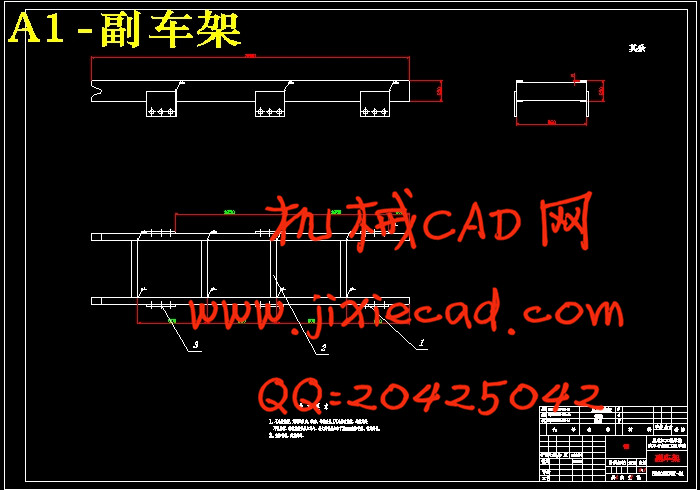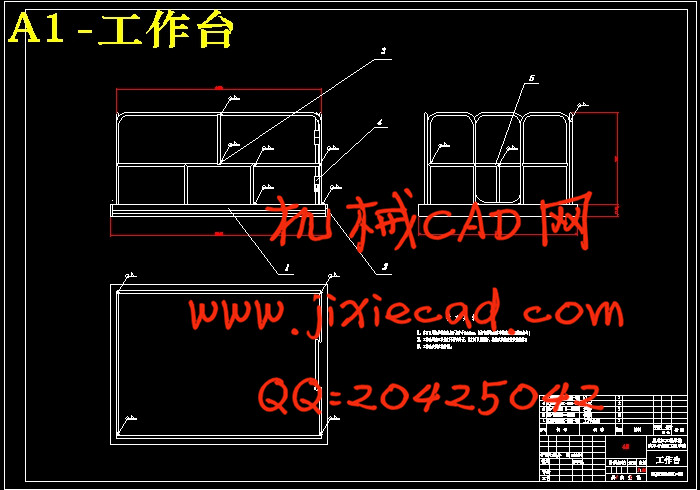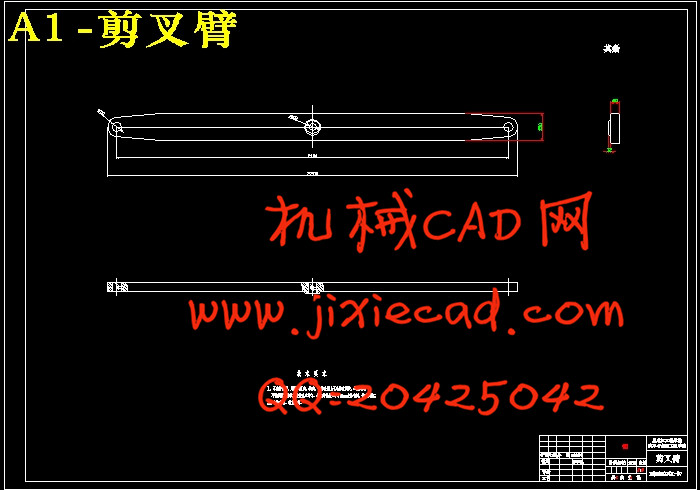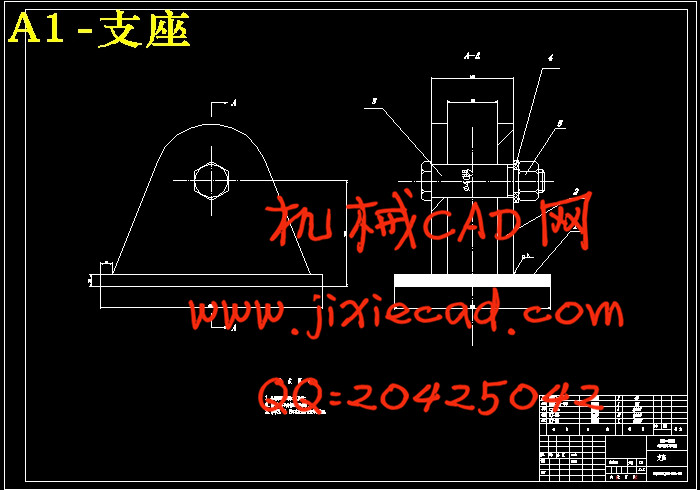设计简介
摘 要
文中主要对HQ5050JGK高空作业车的二类底盘的选型和整体布置、动力传动装置设计分析、工作装置设计分析和控制系统设计分析,最后进行整车稳定性校核。
根据设计要求及其技术参数的要求,其设计思路为:根据高空作业车的举升质量要求,确定升降机的结构方案,然后确定汽车底盘及车辆的总体布置和控制系统。
在设计说明中,首先对升降机不同结构方案进行了比较,得出了设计方案,然后对负载进行分析计算,选择确定了整车的结构参数,然后根据负载和使用状况进行液压系统的设计。
文中主要完成的是HQ5050JGK高空作业车的总体结构设计、液压回路设计及传动装置工作装置的详细设计。高空作业车设计时按6单元展开,所有的设计工作都是围绕这6个单元展开的:高空作业车总体设计、举升机构的设计、工作装置的设计、动力传动装置的设计、安装保护装置、整车稳定性校核。
关键词:总体设计;举升机构;工作装置;动力传动装置;性能分析
According to requirements design and technical parameters of the requirements, design ideas are as follows: under the aerial lift vehicle quality requirements, to determine the structure of the lift program, and then determine the vehicle chassis and the overall layout and control system.
In the design specification, the first lift programs with different structures are compared, obtained design program, then loads analysis and calculation, select the vehicle to determine the structural parameters and based load and use the situation to the hydraulic system design.
In the main text to complete the HQ5050JGK Aerial overall structural design, hydraulic circuit design and gear detailed design of working device. Aerial vehicles designed to start by 6 units, all of the design work around these six units started. Aloft working car overall design、the design of lifting mechanism、work device design、the design of power transmission device、installation protection device、the vehicle stability checking.
Key words: The overall design; Lifting mechanism; Work device; Power transmission device; Performance analysis
目 录文中主要对HQ5050JGK高空作业车的二类底盘的选型和整体布置、动力传动装置设计分析、工作装置设计分析和控制系统设计分析,最后进行整车稳定性校核。
根据设计要求及其技术参数的要求,其设计思路为:根据高空作业车的举升质量要求,确定升降机的结构方案,然后确定汽车底盘及车辆的总体布置和控制系统。
在设计说明中,首先对升降机不同结构方案进行了比较,得出了设计方案,然后对负载进行分析计算,选择确定了整车的结构参数,然后根据负载和使用状况进行液压系统的设计。
文中主要完成的是HQ5050JGK高空作业车的总体结构设计、液压回路设计及传动装置工作装置的详细设计。高空作业车设计时按6单元展开,所有的设计工作都是围绕这6个单元展开的:高空作业车总体设计、举升机构的设计、工作装置的设计、动力传动装置的设计、安装保护装置、整车稳定性校核。
关键词:总体设计;举升机构;工作装置;动力传动装置;性能分析
ABSTRACT
Focuses on HQ5050JGK aerial second class chassis selection and the overall layout, power transmission equipment design analysis, work equipment design analysis and control system design and analysis, the last vehicle stability check.According to requirements design and technical parameters of the requirements, design ideas are as follows: under the aerial lift vehicle quality requirements, to determine the structure of the lift program, and then determine the vehicle chassis and the overall layout and control system.
In the design specification, the first lift programs with different structures are compared, obtained design program, then loads analysis and calculation, select the vehicle to determine the structural parameters and based load and use the situation to the hydraulic system design.
In the main text to complete the HQ5050JGK Aerial overall structural design, hydraulic circuit design and gear detailed design of working device. Aerial vehicles designed to start by 6 units, all of the design work around these six units started. Aloft working car overall design、the design of lifting mechanism、work device design、the design of power transmission device、installation protection device、the vehicle stability checking.
Key words: The overall design; Lifting mechanism; Work device; Power transmission device; Performance analysis
摘要 Ⅰ
AbstractⅡ
第1章 绪论1
1.1课题研究的目的及意义1
1.2高空作业车的国内外研究状况1
1.2.1高空作业车的国外研究状况1
1.2.2高空作业车的国内研究状况 2
1.2.3 高空作业车发展动向 3
1.3高空作业车的组成及功用 3
1.3.1 工作装置 3
1.3.2 动力装置 6
1.4 主要内容及技术路线 6
1.4.1 主要内容 6
1.4.2 技术路线 6
第2章 高空作业车总体设计 8
2.1 高空作业车底盘的选择 8
2.1.1二类底盘选择依据 8
2.1.2 选择二类底盘要求 8
2.2 工作台的结构设计和主要尺寸确定 10
2.3 举升机构的设计 11
2.3.1剪叉臂材料的选择 12
2.3.2剪叉臂尺寸的确定 13
2.3.3横轴的选取 17
2.4 支腿机构设计计算 18
2.4.1支腿跨距的确定 20
2.4.2支撑脚接地面积确定 22
2.5 总体主要参数确定 22
2.5.1 尺寸参数的确定 22
2.5.2 质量参数的确定 22
2.5.3 总质量ma 23
2.6 本章小结 23
第3章 液压系统设计 24
3.1 执行元件类型、数量和安装位置 24
3.2 速度和载荷的计算 24
3.2.1速度计算及速度的变化规律 24
3.2.2执行元件的载荷计算及变化规律 25
3.3 液压系统主要参数的确定 26
3.3.1 系统压力的初步确定 27
3.3.2 液压执行元件的主要参数 27
3.4 液压系统方案的选择和论证 32
3.4.1油路循环方式的分析和选择 32
3.4.2开式系统油路组合方式的分析选择 33
3.4.3调速方案的选择 33
3.4.4液压系统原理图的确定 33
3.5 液压元件的选择及其连接 33
3.5.1油泵的选择 34
3.5.2取力器布置方案及基本参数选择 35
3.6 本章小结 36
第4章 高空作业车性能分析 37
4.1 汽车动力性能分析 37
4.1.2汽车的行驶方程式 37
4.1.3汽车最高车速的确定 40
4.2 燃油经济性的计算 40
4.3 支腿压力的计算 42
4.4 本章小结 45
结论 46
参考文献47
致谢 48






